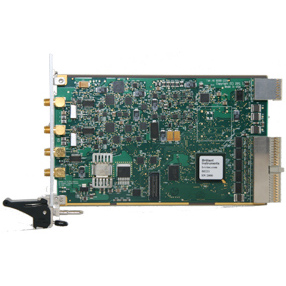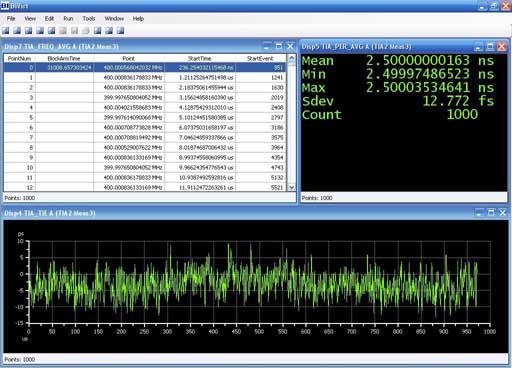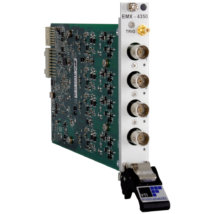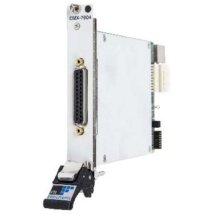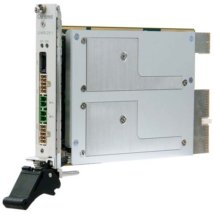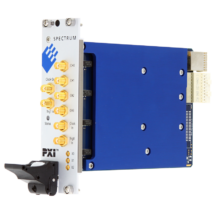More Tests in Less Time
The BI221 is a high performance time and frequency measurement instrument. Its high resolution and throughput, combined with continuous measurement capability, allow you to make measurements that are not possible with traditional time-interval counters. For example, they can timetag events (edges of an input pulse train) at a rate of 1 million per second continuously to on-board memory, while each of the edges is measured with 8ps resolution. This provides it with the capability to analyze the dynamic variations in pulse timing, pulsewidth, or frequency. In other words, the difference between the BI221 and traditional counters/timers is analogous to the difference between voltmeters and scopes. Measurements can also be streamed continuously over the PXI interface allowing unlimited acquisition at high rates.
Full-Featured Instrument
The BI221 is a full instrument-on-a-card with all the features and capabilities you would expect in bench-top instruments including high quality inputs, built-in NIST traceable calibration, and software and hardware that deliver fully computed results. The instrument has 10 measurement functions such as Frequency, Time Interval and Pulsewidth. All functions work directly on the input signal at frequencies up to 400MHz without any prescaling. This means that you can measure pulses as narrow as 1ns, occurring at frequencies up to 400MHz, or the skew between two signals at 400MHz. There is also a prescaler for each input channel which allows frequency and period measurements to 5.0GHz.
The inputs of the instrument include programmable termination voltages. This feature is seldom found even in the best of the bench-top instruments. You can select by software control either a 1M Ohm impedance to ground, or a 50 ohm load which is terminated to an accurately programmable voltage between -3V and +3V. This allows you to connect ECL, PECL, or CML sources directly to the instrument with the proper loading. The input comparators have a fixed hysteresis of 25mV which is useful for signals with slow risetime or high noise levels. It sets different threshold levels for the rising edge and the falling edge which prevents false triggering.
Easy to Use Software
The software for the BI221 is designed for ease of use and extremely high performance. The driver software automatically manages the streaming of measurements at the high rates which are possible with the PXI interface. The front panel software for Windows allows you to easily set up multiple simultaneous displays of the measurements. This gives multiple views of the same data, or different functions from the same data. For example, you can set up the display to show a graph of the frequency of the signal vs. time, plus a tabular display of the same results, plus a graph of the time deviation of the signal vs. time, all from the same measure-ment acquisition run. The front panel can also run multiple instruments simultaneously. All Carmel Instruments models use the same software for easy migration between models.
The screen image below is from an actual measurement of a 400 MHz clock. One thousand single channel measurements were taken. The tabular display shows 1000 frequency measurements and the times and event numbers when they were taken. The digital display shows the statistics on period calculations of the same data. The graph display shows the TIE (Time Interval Error) calculations vs. time. Note that all 1000 measurements were taken in less than 1 ms. In addition, the resolution of the instrument is clearly evident with the Y axis of the graph at 5 ps per division.

